
Try as I might, I couldn't remember visiting Kennedy Space Center attractions during my trips to Florida as a kid.
My parents had taken my brother and me to Disney World twice. And with Cape Canaveral just an hour's drive east of Orlando, it was hard to imagine we hadn't been.
The lack of photographic evidence in family albums seemed to confirm it.
So, this summer, my girlfriend and I planned a weekend at Cocoa Beach, a mere half-hour drive south of the Kennedy Space Center Visitor Complex.
We gave ourselves one full day to explore this awe-inspiring museum and testament to human ingenuity.
Given our time limitation, we had to prioritize what to see. We were limited by both the museum's visiting hours and our energy levels and attention spans.
Even with some of the tours, activities, and experiences unavailable due to pandemic restrictions, we still found it hard to get to everything on offer.
This article reflects our game plan that day, so you can get an idea of how long it can take to see the top attractions at the Kennedy Space Center in Florida.
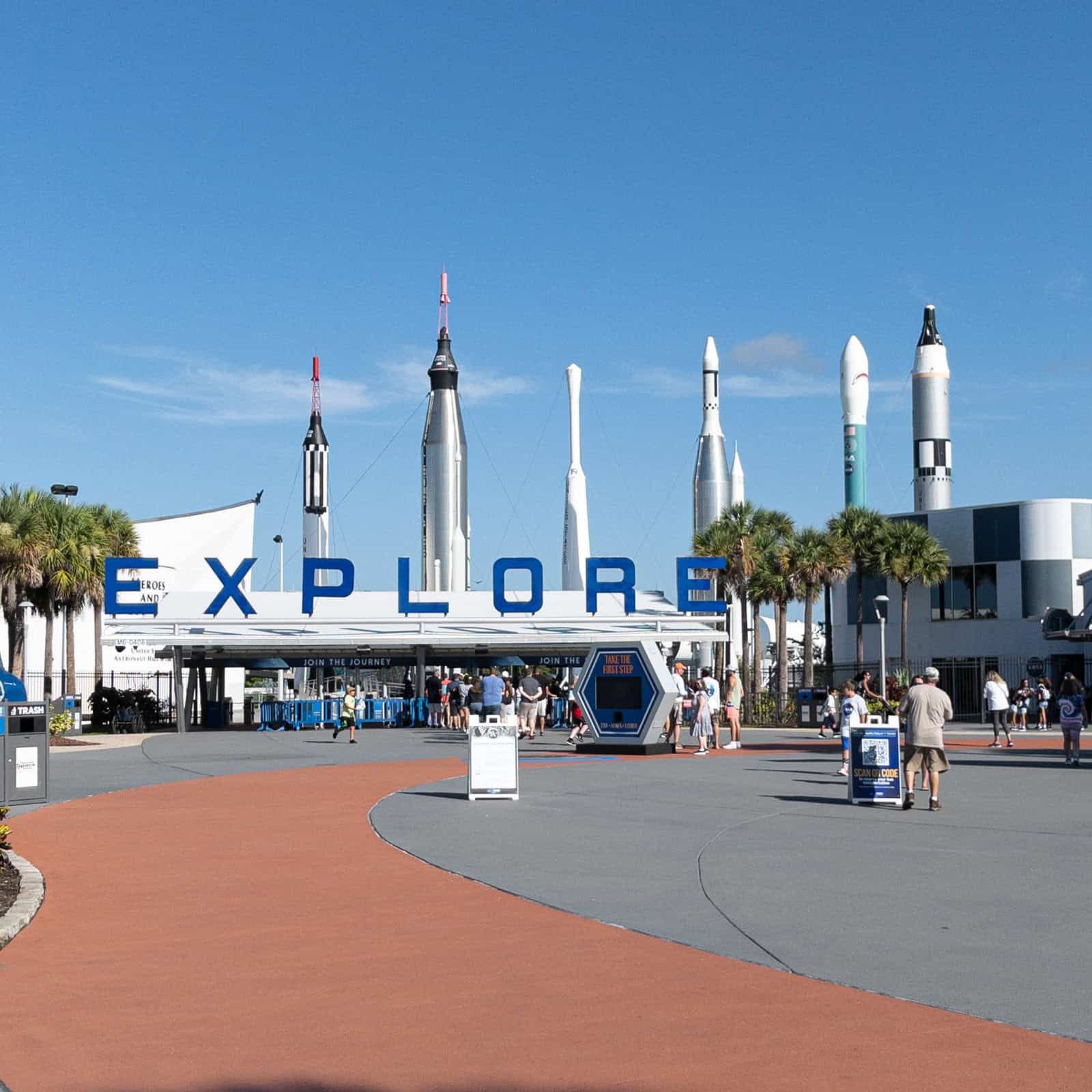
Table of Contents
Kennedy Space Center Tickets and Arrival
Tickets
I bought two adult tickets in advance for $57 apiece to ensure we could get into the Kennedy Space Center on the day we wanted.
Kids age 12+ are considered adults. Children's tickets for those aged 3-11 are $47.
Tickets are only valid for the date you select and do not include parking ($10 for cars). They do, however, include all of the attractions in this article unless otherwise noted.
You can present the ticket on your mobile device at the gate, pick it up at Will Call, or print it at home if you prefer paper.
Arrival
The Kennedy Space Center is currently open from 9 am – 5 pm.
We ended up leaving Cocoa Beach a little later than I'd wanted, arriving at the Visitor Complex parking lot around 9:25 am.
A Blue Origin Rocket Factory is visible from the road as you near the entrance to the Space Center, a reminder that there's always room for improvement when it comes to rocket science!
Thankfully, it wasn't too busy. There were other visitors there before us, but it wasn't the crush of humanity I imagine it can be during a typical summer season.
I flashed our tickets on my iPhone at the entry gate, and we were in a one-of-a-kind engineering wonderland.
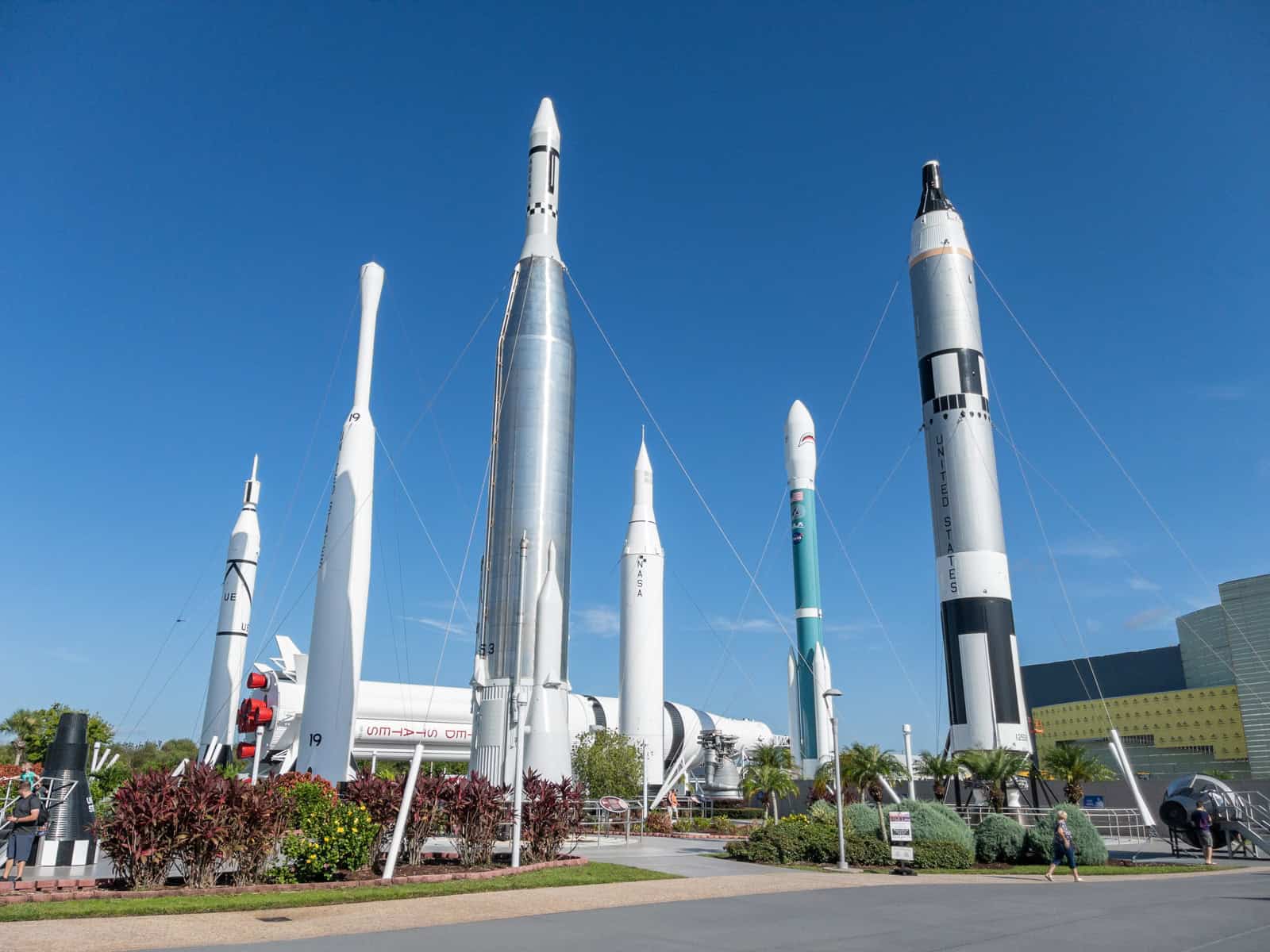
Top Attractions
Rocket Garden
The first Kennedy Space Center attraction visitors see is the Rocket Garden. It's impossible to miss and one of the original features of the park.
All of the rockets on display are real, though none were launched into space, as that technology has only recently become available (thanks SpaceX).
The 95-foot silver rocket (front-left, pictured above) is a full-scale replica of the Mercury-Atlas rocket that launched John Glenn into outer space on February 20, 1962. He was the first American to orbit Earth.
The 223-foot long Saturn 1B rocket positioned horizontally was used to launch Apollo 7, the first crewed Apollo mission; it was another step toward landing astronauts on the moon.
There's also a full-size Saturn V rocket engine on display, and you can also sit inside a Mercury capsule.
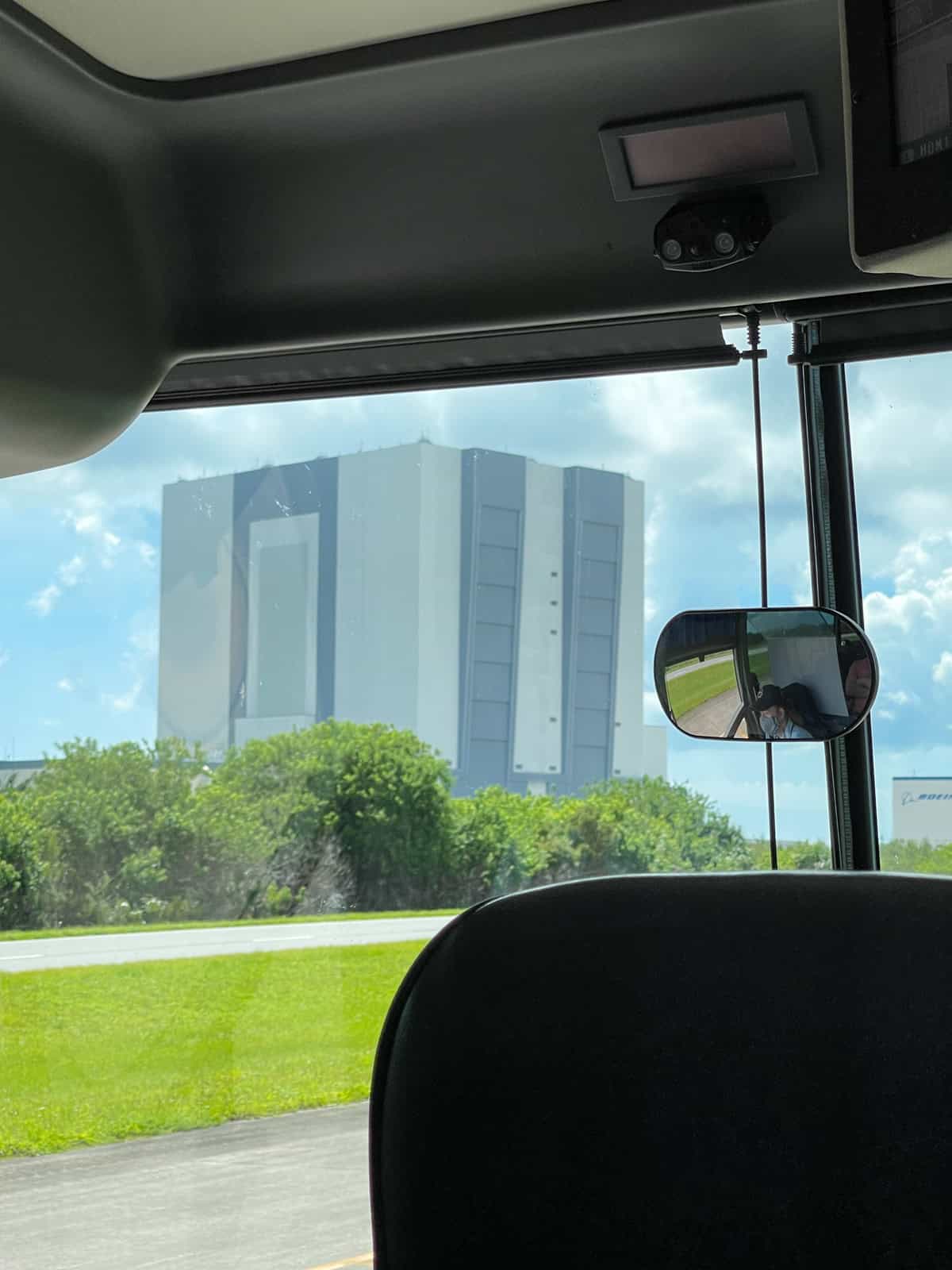
Apollo/Saturn V Center
Shuttle and Vehicle Assembly Building
Seeing the Saturn V rocket that launched people to the moon multiple times was tops on my list of things to do at the Kennedy Space Center.
The Apollo/Saturn V Center is a 20-minute drive north of the Visitor Complex.
Complimentary roundtrip shuttle bus rides are included in a general admission ticket. However, you need to reserve a time.
I didn't know how busy the park would get over the day, but I didn't want to risk missing this experience, so I suggested we go early and get it out of the way.
We booked a 10 am shuttle, which drove past the immense Vehicle Assembly Building. Sit on the right side of the bus if you want a shot at good photos.
If not for the pandemic, it would be possible to get closer to the building where rockets are assembled via a 20-minute bus tour, in addition, to launch complex 39B.
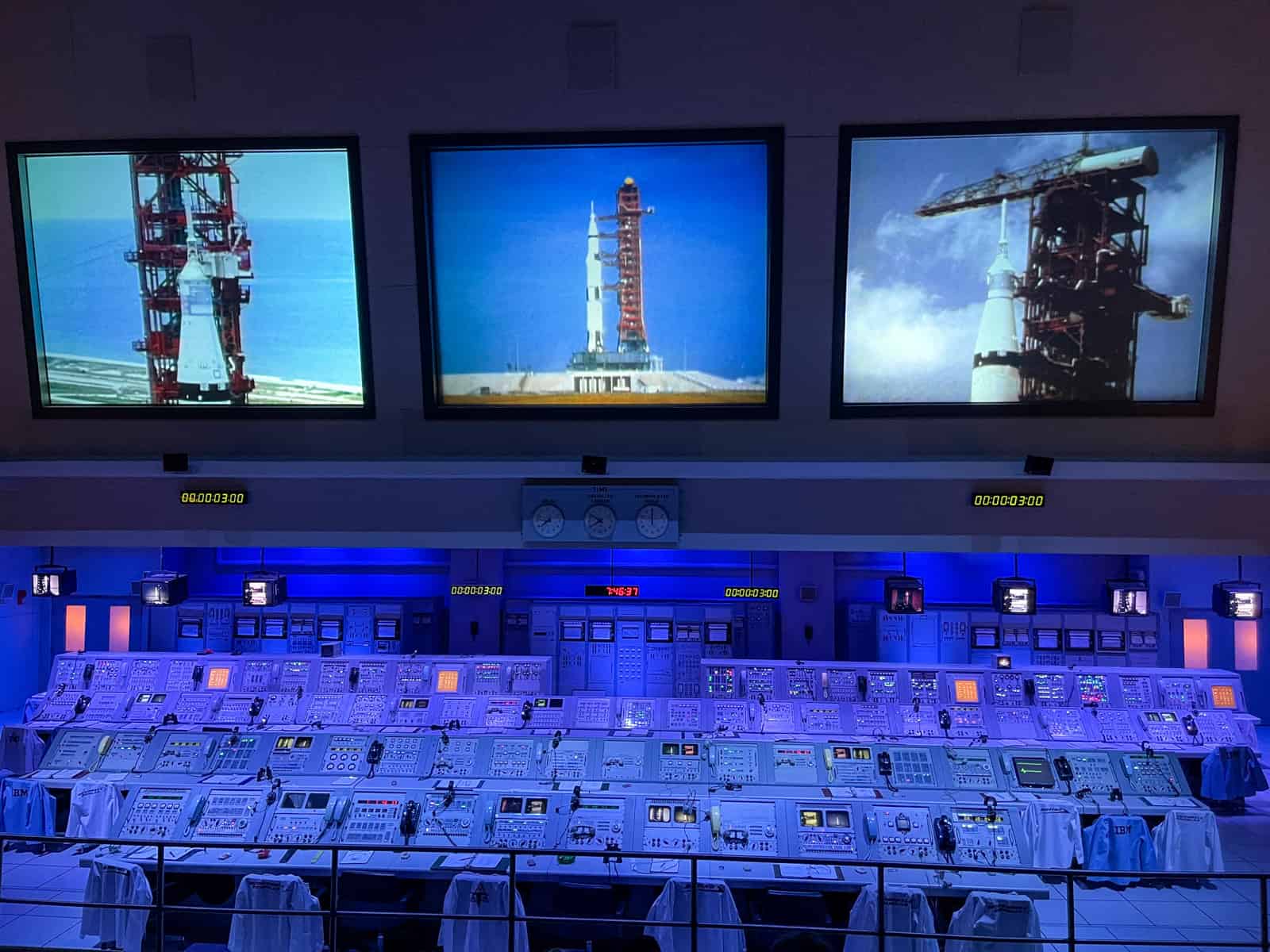
Firing Room
Upon arrival at the Apollo/Saturn V Center, you'll first see the actual Firing Room where engineers launched the Apollo 8 mission in 1968.
The Apollo 8 mission was the first to send humans into orbit around the moon, setting the stage for later missions to land them there.
Once everyone is in the room, a launch sequence occurs, culminating in video footage of the Apollo 8 launching from Cape Canaveral.
It must have been extremely tense in that room as everyone waited with bated breath to launch that rocket.
When the show ends, doors open to the full-size Saturn V rocket.
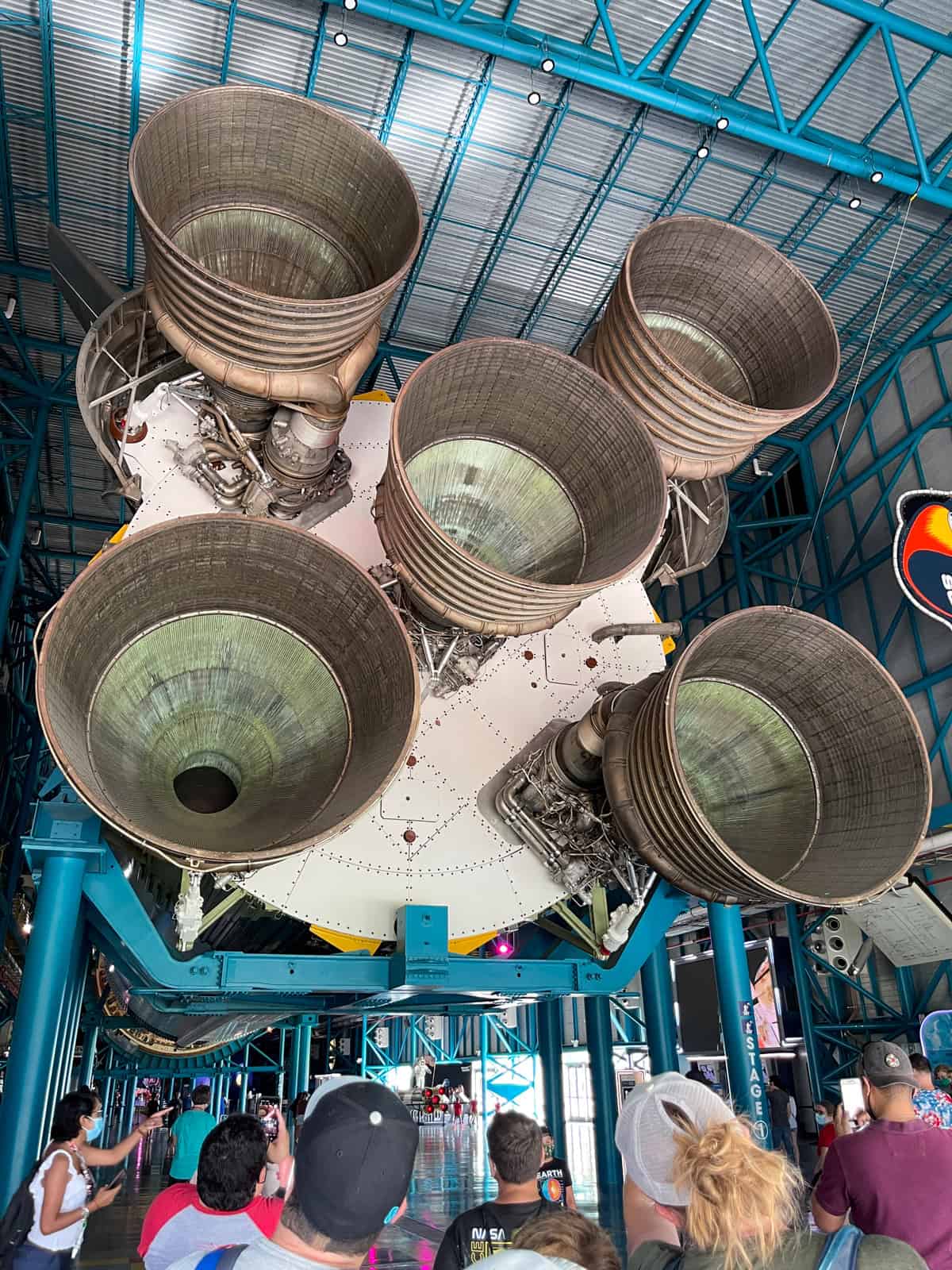
Saturn V Rocket
Walking into the exhibition space, the first thing you see are five enormous Saturn V F-1 engines, each capable of generating more than 7.5 million pounds of thrust.
That's how much power was required to lift the 363-foot, 6-million pound Saturn V rocket and send it hurtling out of Earth's atmosphere and toward the moon.
This rocket is the most complex machine ever built. Thirteen Saturn V rockets were launched from 1967 to 1972.
To say it was a team effort is an understatement. About 400,000 people were estimated to be involved in its design and construction.
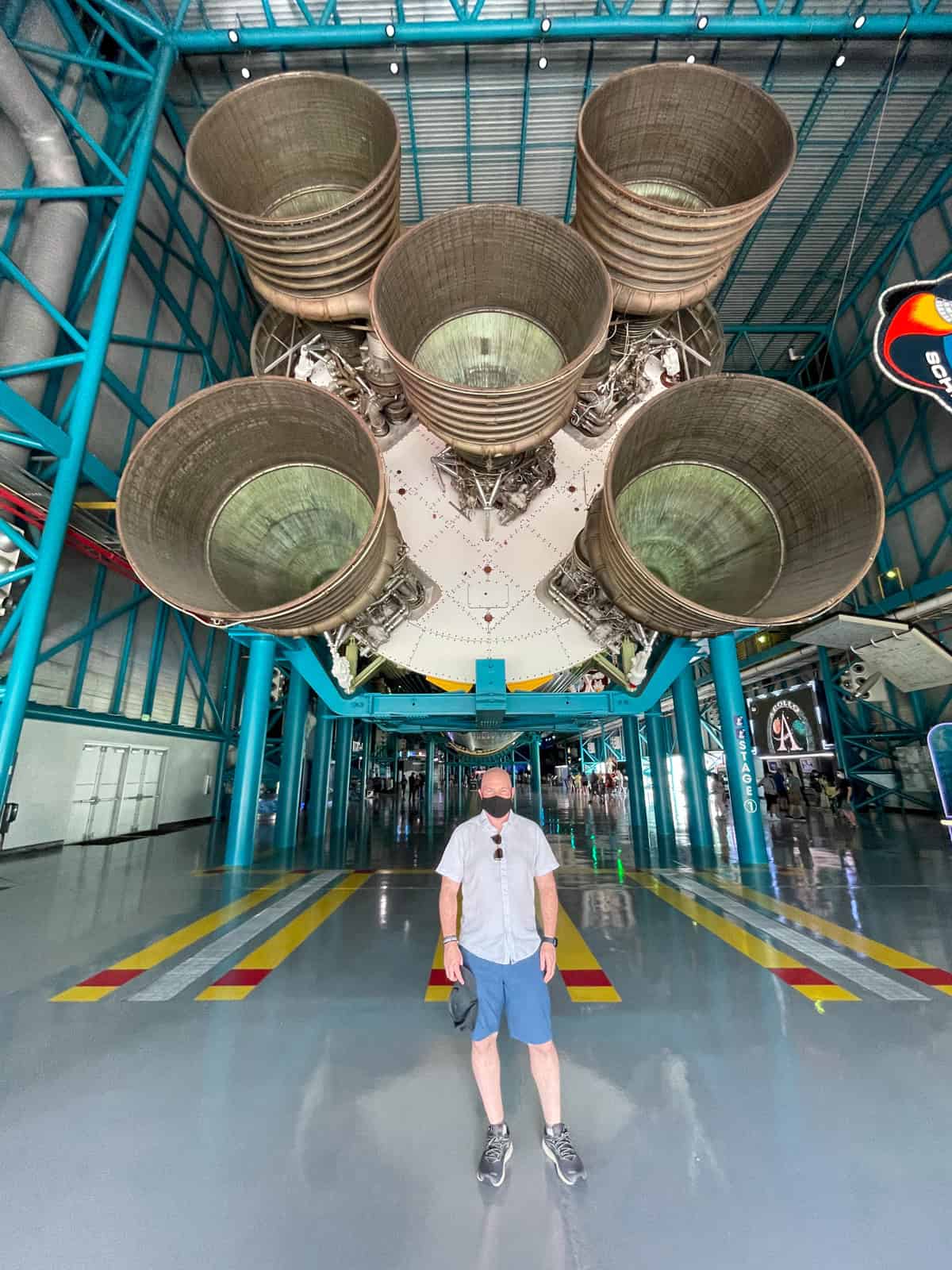

There's more to the Saturn V than just the engines you see at the bottom, though those were the most powerful.
As you walk the length of the rocket, from bottom to top, you pass by the various stages, which reveal yet more engines.
The second stage (pictured below) boasts another five engines and a lot of wiring.
It's hard to imagine how meticulous engineers needed to be in putting everything together.
Sure, there are some backup systems, but by and large, everything had to work correctly if the Apollo missions were to be successful and bring the astronauts home safely.
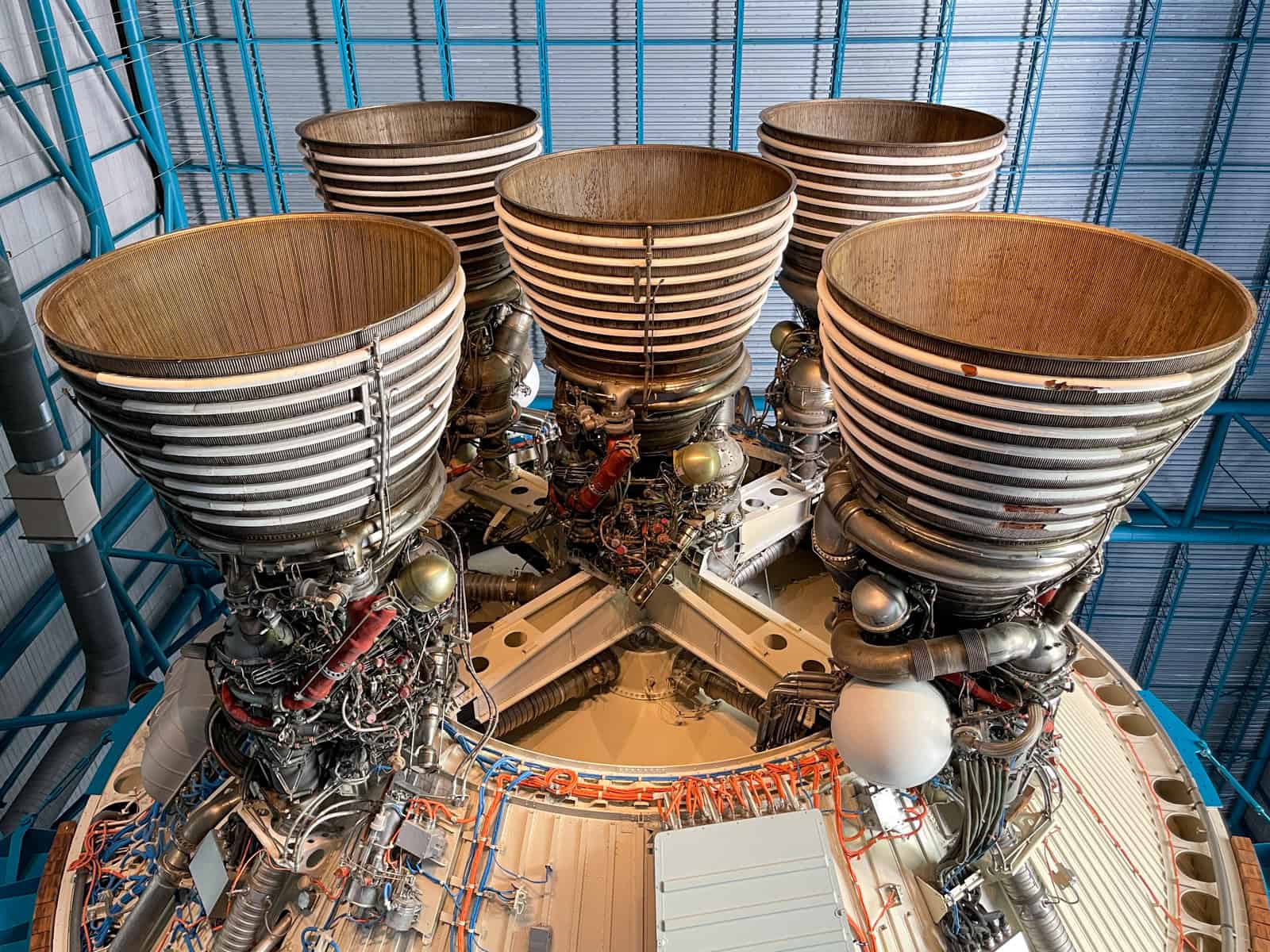

The third stage of the Saturn V had just one engine, and boy, it looks delicate.
While much of my attention was on the enormity of the rocket, there were some other interesting displays, including:
- “Moonscape” featuring a real Lunar Module 9 in a scene from the Apollo 11 mission when a US flag was planted on the moon by Buzz Aldrin and Neil Armstrong.
- Lunar roving vehicle from Apollo 16.
- Command Service Module.
- A 3.7 billion-year-old lunar rock sample you can physically touch.
- Life-size, holograms of astronauts that answer your questions.
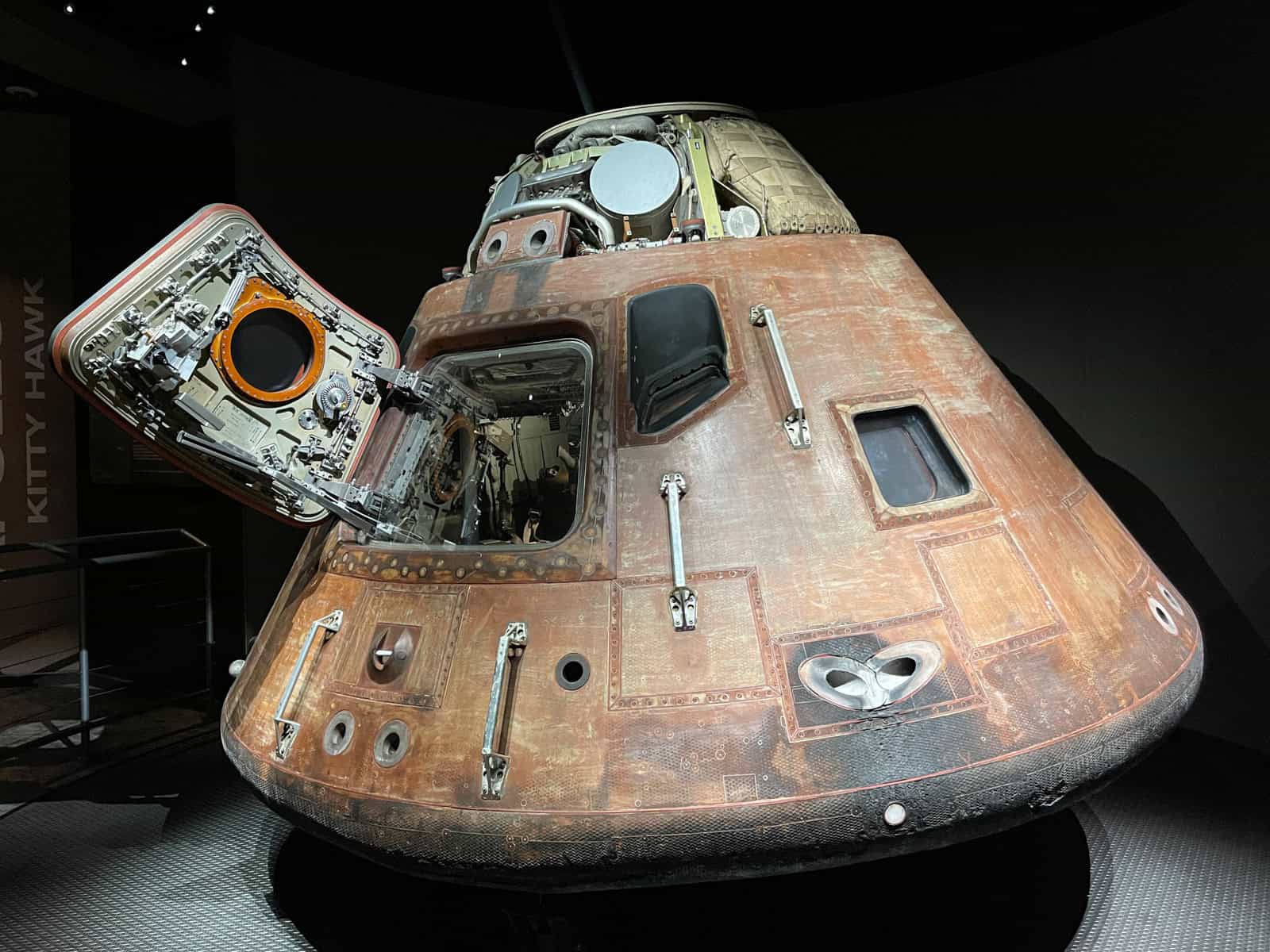
Apollo Treasures Gallery
The Apollo Treasures collection features the actual crew capsule “Kitty Hawk” from the Apollo 14 mission in a dedicated space off the main exhibition hall.
I find the exterior fascinating, especially the burn marks from the small rockets firing to position the capsule as needed.
I also find it amazing that we humans have been able to engineer materials to withstand the temperatures of re-entry into Earth's atmosphere.
And that this capsule can float (with the help of some airbags deployed upon landing) in the ocean.
Also on display are a collection of astronaut space suits that show their evolution (and boy, have we come a long way in recent years from those early models).
Once we'd finished with the Apollo/Saturn V Center, we caught a shuttle bus back to the Kennedy Space Center Visitor Complex.
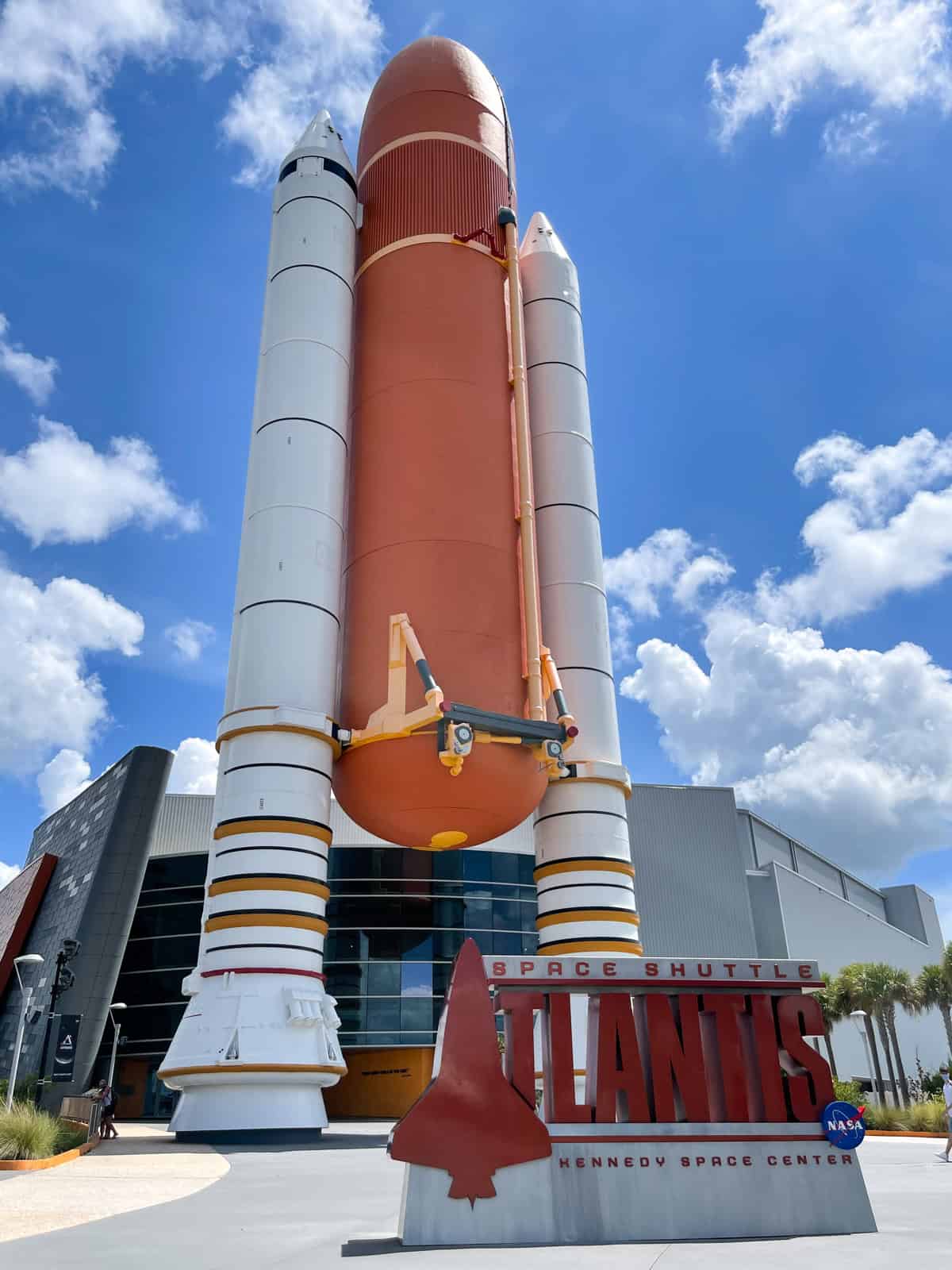
Space Shuttle Atlantis
It was 11:50 when our return bus from the Apollo/Saturn V Center dropped us off outside the Space Shuttle Atlantis exhibit, another of the park's marquee attractions.
Standing tall outside the entrance are two solid rocket boosters and the orange external fuel tank, all of which launched NASA space shuttles into orbit around Earth for 30 years.
I have to admit, the rockets and fuel tank seemed smaller in person than I'd imagined watching them on TV over the years.

Inside, visitors are treated to a stunning display of the Atlantis shuttle, mounted with a rotation of 43.21 degrees. This allows visitors to peer into the cargo bay.
Atlantis was in operation from October 1985 through July 2011.
Key missions included:
- Deploying interplanetary probes (Magellan to Venus, and Galileo to Jupiter).
- Docking and crew change at Russian Space Station Mir.
- Delivery of components for the International Space Station.
- Servicing Mission 4 to the Hubble Space Telescope.
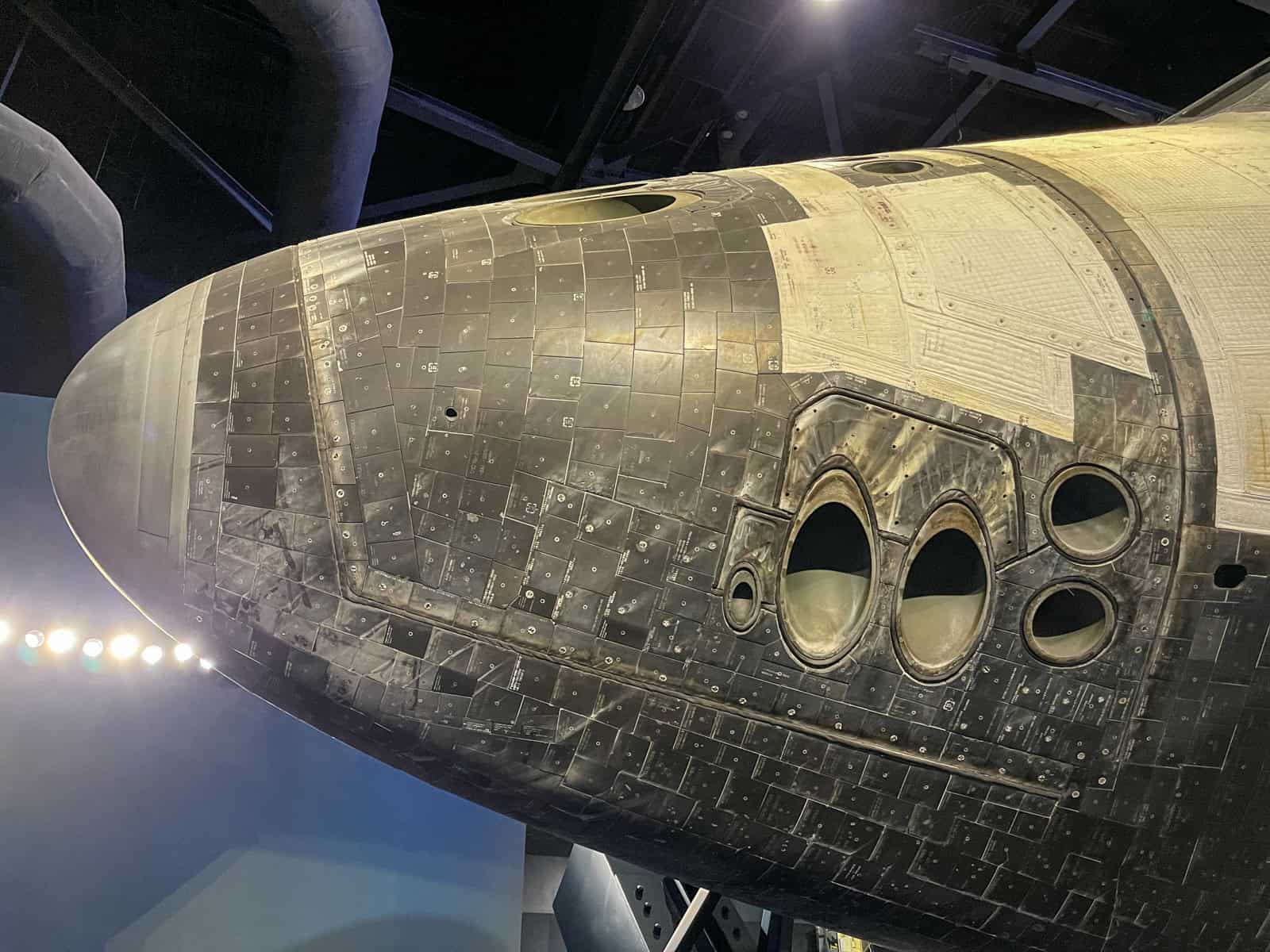
I loved the close-up view of individual tiles that make up the heat shield plating.
During STS-27, a classified four-day mission in December 1988 to launch a satellite, some protective tiles were significantly damaged under a wing during liftoff.
It was so bad that some of the crew, including Commander Robert Gibson, thought they would die during re-entry, much like Space Shuttle Columbia would be lost 15 years later.
To the crew's relief, Atlantis survived re-entry into the Earth's atmosphere and landed safely.

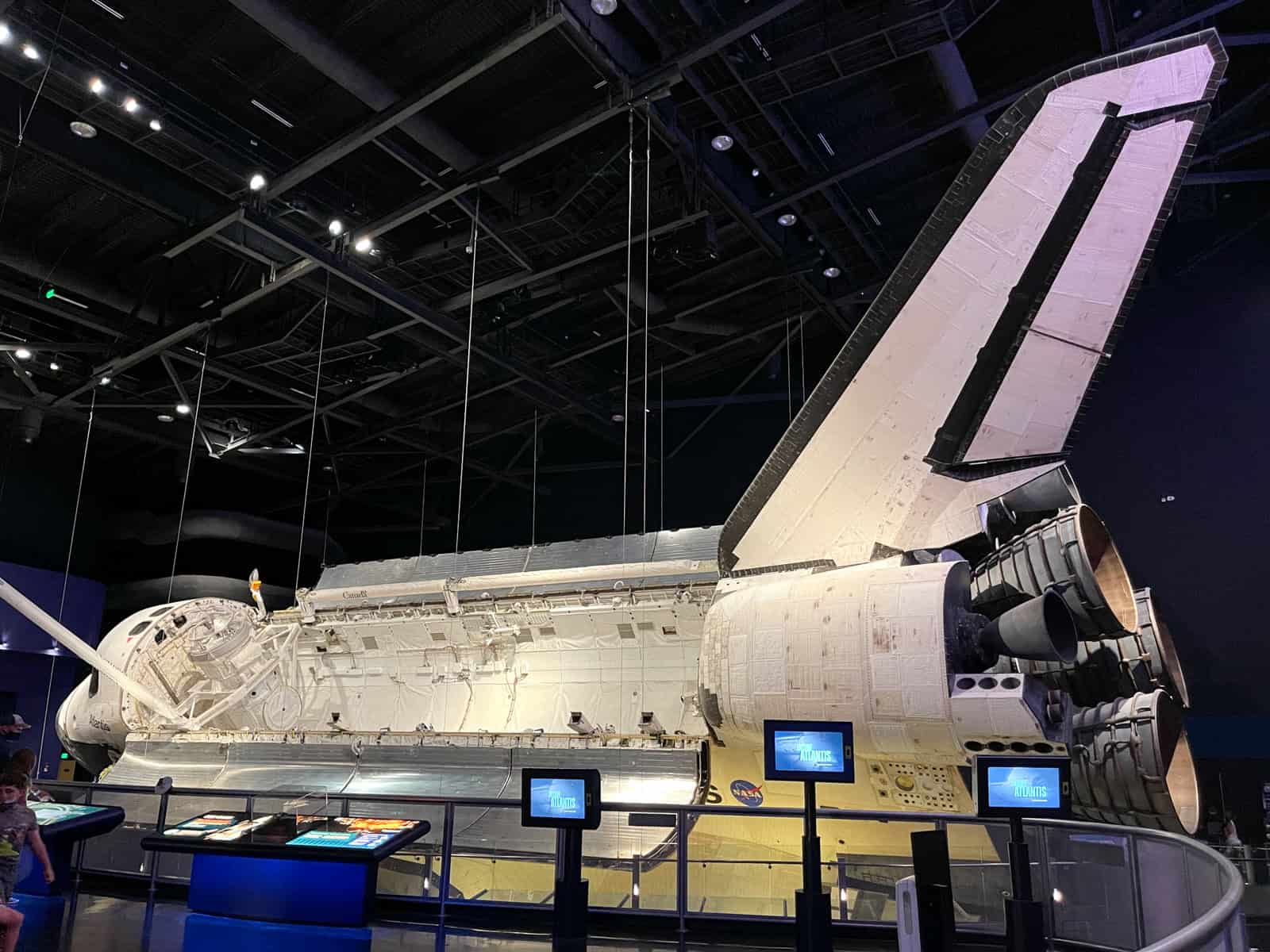
Seeing a Space Shuttle up close for the first time in my life was a treat.
This was the space travel that I grew up with, whereas the Apollo program had wrapped up by the time I was born.
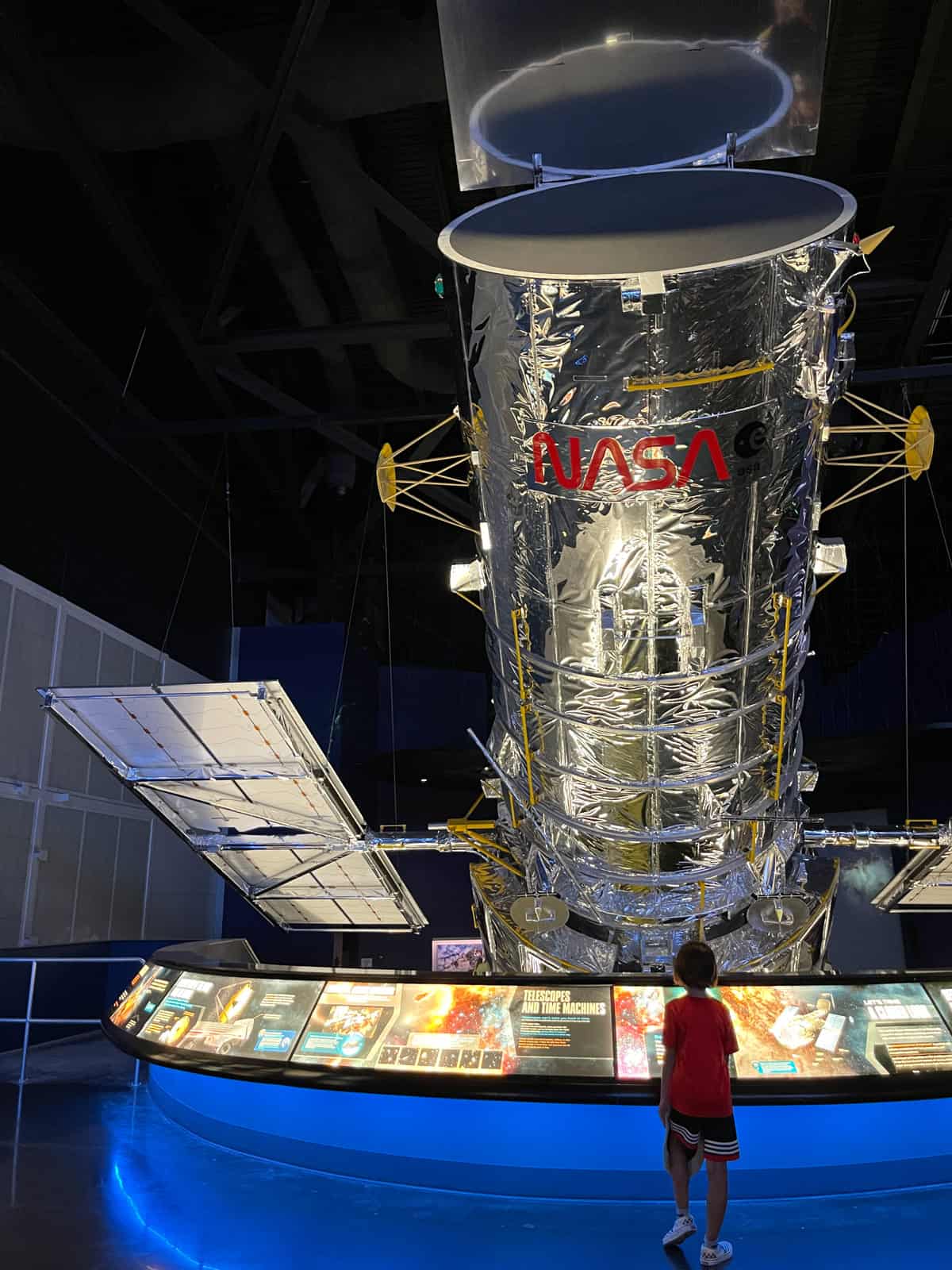
Other Exhibits
There's also a replica of the Hubble Space Telescope, which I believe was built to be as large as possible while still fitting in a shuttle cargo bay.
On the lower level, you'll find Forever Remembered, a touching tribute to the 14 astronauts who died in the Challenger and Columbia accidents.
There's wreckage from each shuttle on somber display, along with some personal effects of each astronaut.
You'll also see some examples of how new technologies allowed astronauts to eat, sleep, and, yes, poop in zero gravity.
We left the shuttle exhibit at 1 pm, after spending about 75 minutes there. It was lunchtime, and we took a 45-minute break to eat in one of the cafeteria-style restaurants.
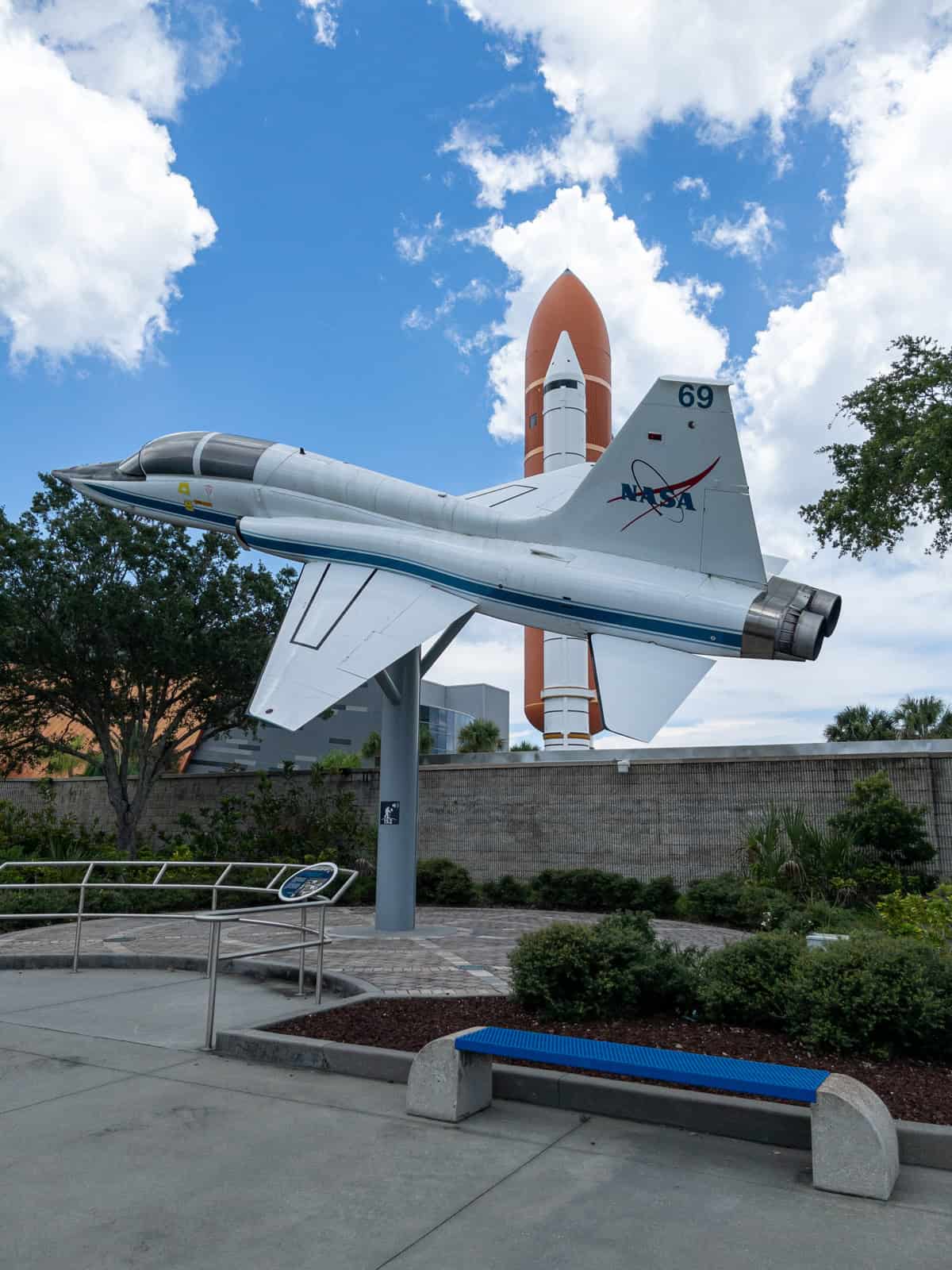
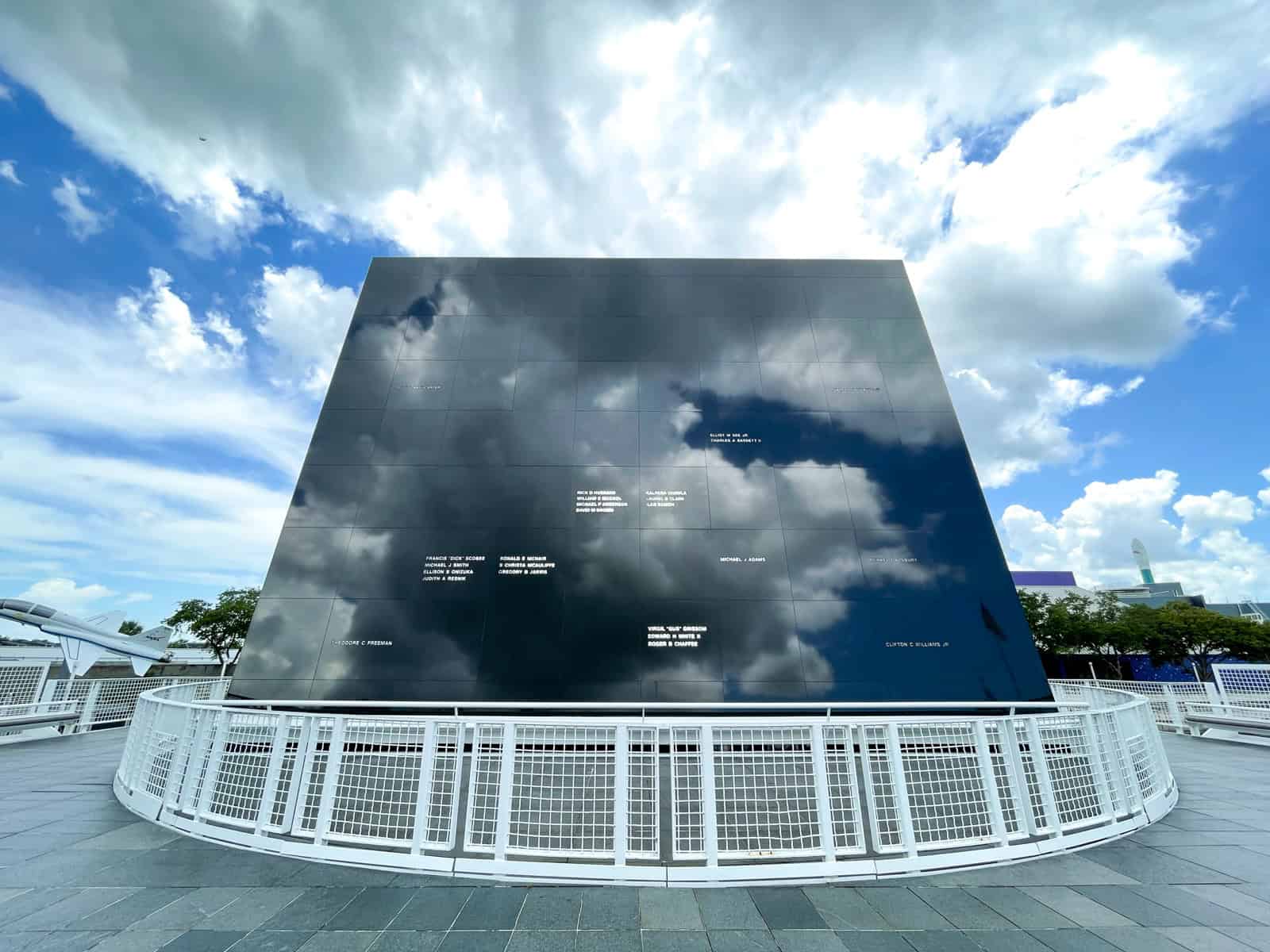
Space Mirror Memorial
Near the Space Shuttle exhibit is a giant white steel square. That's the back of the beautiful Space Mirror Memorial, dedicated to the 24 astronauts who have died due to US space exploration.
Each name is lit up amidst polished black granite, which reflects the sky brilliantly. Take a few minutes to wander over to this unique tribute.
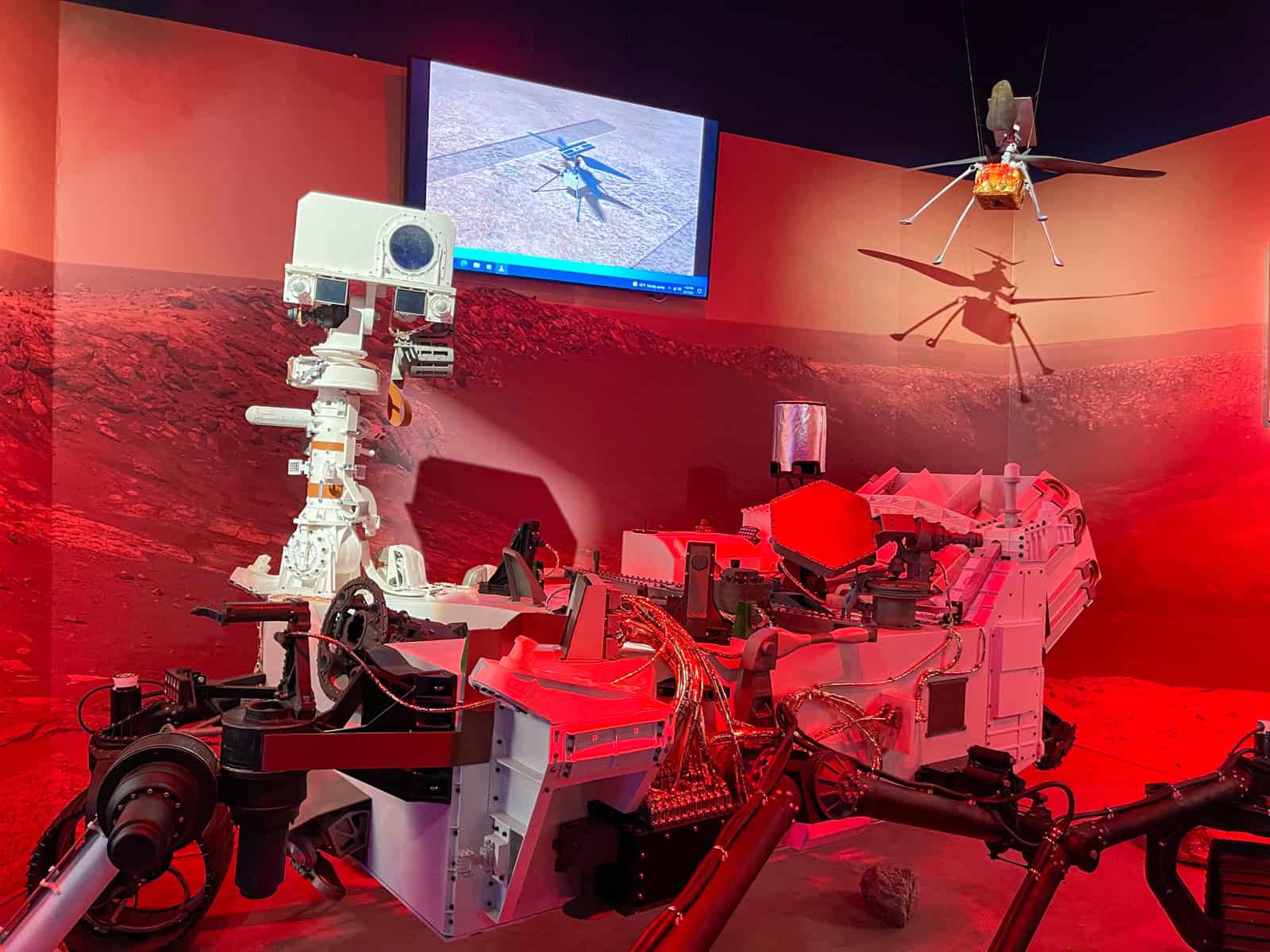
Journey to Mars
At 2 pm, we checked out the Mars exhibit, which was timely considering I watched the Perseverance rover land on the planet live back in February.
Also fascinating about that mission is the drone helicopter, which successfully flew on the red planet.
The Mars exhibit features life-size replicas of both the rover and drone and its predecessors, Curiosity and Spirit.
The evolution of the rovers is evident, as they have gotten both larger and more equipped with cameras and sensors.
We only gave the Mars exhibit 15 minutes. I was running out of steam by this point and still wanted to leave time to enjoy a swim at Cocoa Beach.
Related: Clearwater Beach – Florida's Finest White Sand Beach
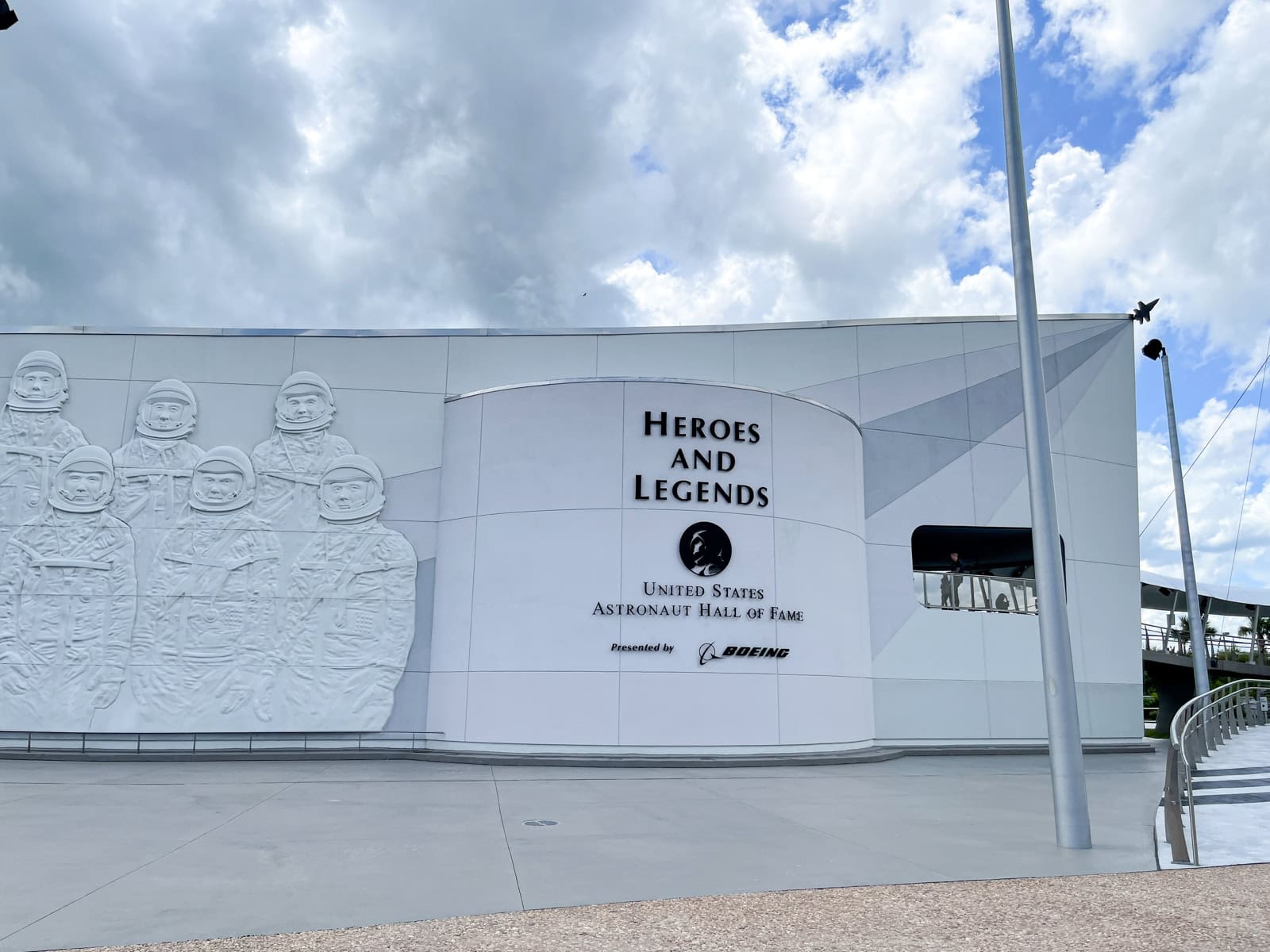
Additional Experiences
The best Kennedy Space Center attractions are the Apollo/Saturn V Center, Space Shuttle Atlantis, and Rocket Garden.
Taking your time at all three can quickly fill a full day at the park, as it did for us.
But, there's more.
- IMAX Theater – A rotating selection of space movies, some of which are in 3D.
- Heroes & Legends – Explore the US Astronaut Hall of Fame.
- Astronaut Training Experience ($175) – Pretend you're going on a mission to Mars, and train accordingly, in this unique four to five-hour experience.
- Dine with an Astronaut – Unavailable at this time.
If you're inclined to watch movies during your visit, and certainly if you want to pay extra for the Astronaut Training Experience, you'll want to budget two days.
Now that I've been once, I'd like to go back to the region specifically to watch a rocket launch.
Dave is the Founder and Editor in Chief of Go Backpacking and Feastio. He's been to 66 countries and lived in Colombia and Peru. Read the full story of how he became a travel blogger.
Planning a trip? Go Backpacking recommends:
- G Adventures for small group tours.
- Hostelworld for booking hostels.
